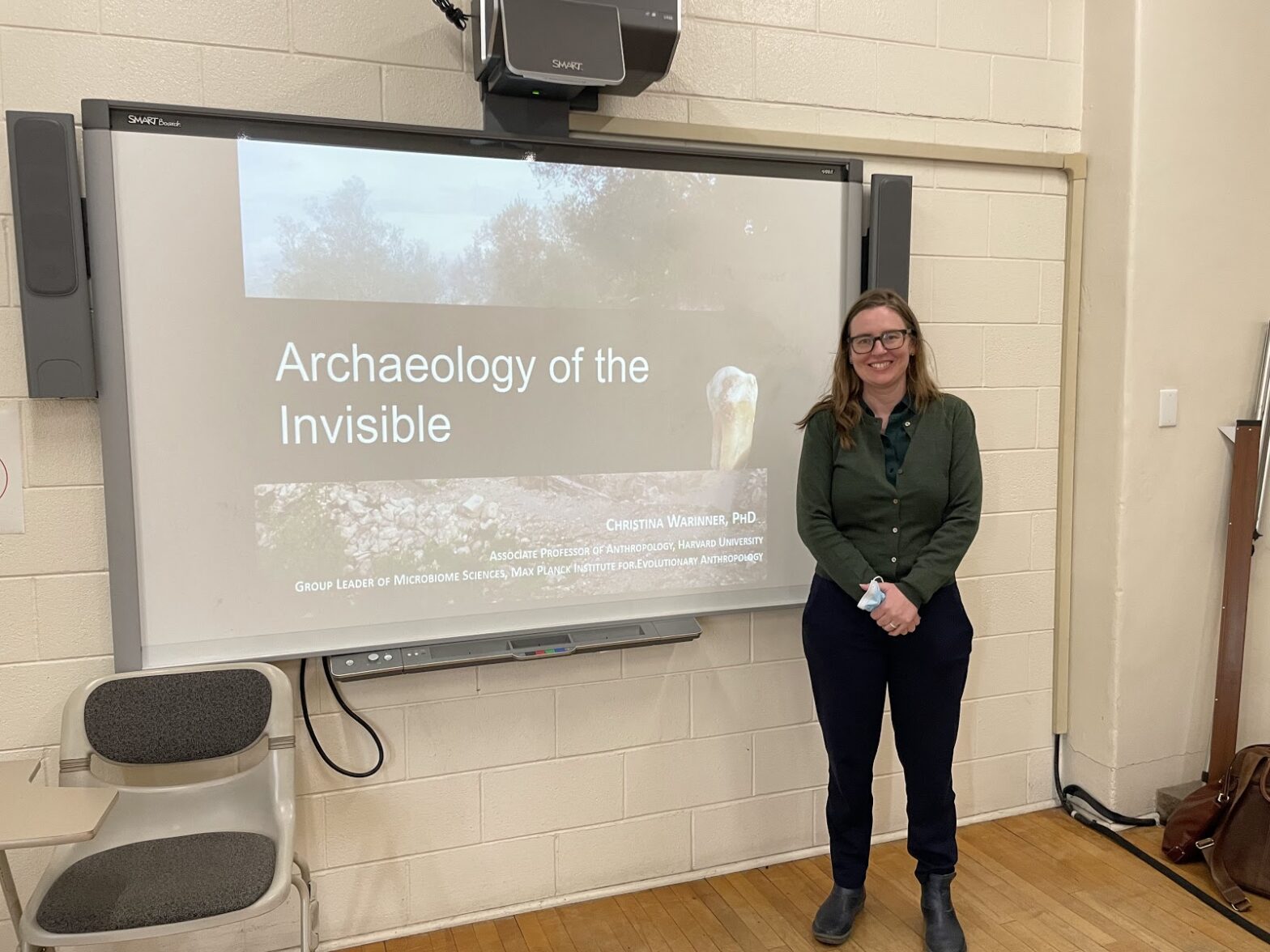By Hope Muñoz / New Mexico News Port
When Harvard anthropology professor Christina Warriner and her team examined burial remains at a women’s monastery in Germany, they discovered something unexpected: microscopic traces of blue pigment on a female skeleton’s teeth.
The nearly invisible amount of lapis lazuli revealed that medieval women had been more involved in producing books than researchers previously believed.
Warinner spoke about her research findings at the University of New Mexico March 29.
Warinner is a bioarcheologist and an expert on the evolution of ancient microbiomes. Her groundbreaking research has helped uncover the origin of plague, and the lost history of a medieval woman.
“We’re in the golden age of archaeological science,” Warriner said.“ We are learning that we can find out how so many things that we thought were lost to time are actually recoverable.”
In a presentation, titled Archaeology of the Invisible, Warriner talked about recent discoveries that are so physically small she jokes they’re “invisible.”
For example, her work on the Cocoliztli Epidemic of 1545 showed that salmonella infection may have been a cause of the previously mysterious illness. Warinner and her team discovered the first known gravesite of victims, recovered human remains, and found traces of ancient DNA pointing to salmonella.
“The new technologies I showed today could also be applied to questions here in New Mexico,” Warinner said.
In New Mexico, a large amount of archaeological research is conducted by the state Office of Archaeological Studies. Since 1952, the office has conducted over 600 archaeological studies. Warinner’s research could help move forward current and future projects.
UNM archaeology graduate student Genevieve Woodhead said she thought Warriner’s talk was very interesting. “It hit a lot of key concepts that I’m interested in as an archaeologist and as a person,” she said. “I learned about methods that I didn’t know about.”
Warriner’s work has attracted prominent attention. Hilary and Chelsea Clinton wrote about Warinner’s research in the introduction to their nonfiction exploration of female heroes, “The Book of Gusty Women.”
“I feel really happy that the work that we did, bringing attention to people that have been forgotten through history, inspired an effort to restore remembrance to the past activities of women,” Warinner said.
“There are many questions about prehistory and history that are unaddressed.
Hope Muñoz is a reporter for New Mexico News Port and can be reached at nmnewsport@gmail.com.
